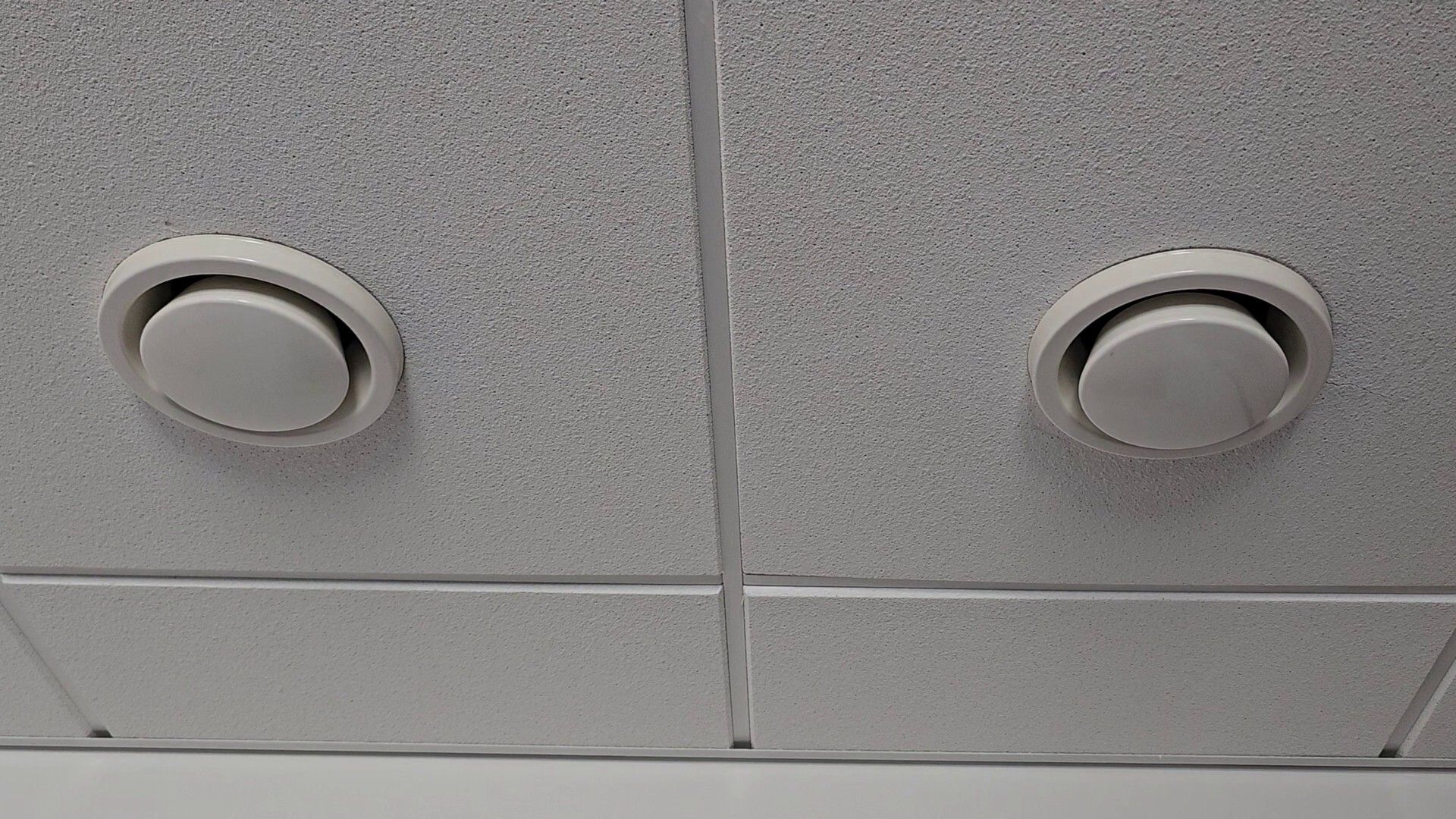I’m sitting in my office, listening to the noisy ventilation system that inspired my AMBIENT project. Here is a short sample:
At the moment, I am primarily focusing on completing my book Still Standing. However, as part of my year-long #StillStanding project, I have also started thinking about the sounds found in indoor environments.
Asking ChatGPT for help
I have yet to begin a proper literature review on ventilation noise, but as a start, I asked ChatGPT for help. We have had lots of discussions about what students can use ChatGPT for at the university this spring. The consensus is that it is a technology we cannot avoid and should embrace its possibilities and limitations. I have previously explored essay writing with You.com. To prepare myself for advising students on ChatGPT, I have decided to test it for various tasks.
I asked ChatGPT to write a blog post based on the following prompt: “Write a blog post about how ventilation noise affects work”. This resulted in a text titled The Unseen Impact of Ventilation Noise on Workplace Productivity. The post includes some bogus stuff, but if one should think about ChatGPT as a “low-pass-filtered” version of the web up until 2021, it also writes something that makes sense:
Ventilation noise, often overlooked and under-researched, can have a subtle but profound effect on an employee’s well-being and productivity. The continuous drone of air conditioning or heating systems can be not only distracting but can also contribute to stress and fatigue.
Let us investigate these further.
Understanding the Impact of Noise on Work Performance
ChatGPT summarizes work performance this way:
Noise, particularly the continuous, low-frequency noise produced by ventilation systems, can lead to decreased motivation and increased stress levels. This ambient noise can contribute to workplace fatigue and lower overall productivity.
This makes sense, although I will need to figure out how much research has actually been done on noise and productivity.
ChatGPT continues:
Continuous exposure to ventilation noise can also impact cognitive functions. It can impair memory, hamper concentration, and result in decreased performance in tasks that require a high degree of attention and precision. This is particularly important in professions that demand intense concentration and accuracy, like programming, design, or technical writing.
It will be exciting to check whether noise can actually improve performance. I have heard that some people like to use apps with noise to concentrate so I don’t immediately buy the idea that noise necessarily reduces work performance.
Noise and Health Implications
One thing is productivity; another is health:
Exposure to persistent noise doesn’t only impact productivity; it can also have health implications. It can contribute to the development of health issues such as hearing problems, cardiovascular disease, sleep disturbances, and even mental health problems like anxiety and depression.
Again, I will need to look into the literature here, but I am skeptical about the scientific evidence for some of these claims. I hypothesize that there are adverse effects of (at least some types of) noise, but this will be another thing to investigate more systematically.
Tackling Ventilation Noise
ChatGPT also provides some advice on how to improve the situation:
Acoustic Insulation: Investing in acoustic insulation for your ventilation system can significantly reduce noise levels. Acoustic ducting materials can effectively absorb the noise created by HVAC systems and contribute to a quieter work environment.
I did not know what an HVAC system is, but a search on DuckDuckGo (my preferred search engine these days) led me to a Forbes article explaining that it is an acronym for:
- Heating
- Ventilation
- Air Conditioning
Most modern buildings have such systems these days, so I imagine there is some research on how they are constructed and function. However, given the applied nature of such research (what would typically be the D-part of “R&D”), there may be more technical reports than scientific articles.
ChatGPT’s other mitigation suggestions (Sound Masking, Proper Ventilation Design and Maintenance, and Flexible Work Arrangements) make sense but are not particularly relevant to me at this stage.
Conclusion
This was my first attempt at asking ChatGPT for research advice. It wrote a blog post that, at first glance, looked convincing in both form and content. Digging into the content left me with several open questions. Many people have complained about ChatGPT’s inability to support its claims and that it will write untrue sentences. I think Miller Puckette described such machine-learning-based generative algorithms wonderfully in his keynote lecture at this year’s Sound and Music Computing Conference. There he polemically described machine learning as an “advanced spline function”. If one thinks about ChatGPT as such an advanced spline function, trained on a big chunk of the web up until 2021, it will necessarily return information that is an average on what is out there. In many cases, this will lead to something meaningful, often based on consensus knowledge (although with the implicit bias of the current web). One should distinguish this from scientific knowledge. However, my initial exploration can be a good starting point for understanding what is out there and what could be interesting to explore further. That requires proper research. I will start by reading the existing scientific literature before continuing with empirical studies in the AMBIENT project.
